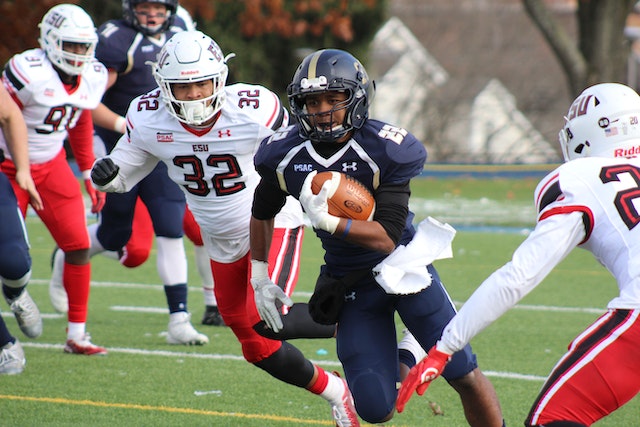Sports media rights are hot right now and for good reason. As more people cut the cord, watch content online and on their phones, and search for specific programs from platforms like YouTube, digital streaming services and OTT (over-the-top) services have become more widely available at a lower price.
Sports rights are often among the most expensive type of programming to produce so there’s an elevated demand for viable revenue streams to support them. Fortunately, there are many ways sports organizations can maximize their media rights.
By taking advantage of these six strategies, sports organizations can not only lock in deals that meet their specific goals but also increase their ROIs (return on investment). In this blog post we will discuss each strategy in detail along with examples from individual sports leagues as well as some key players who should follow suit.
Track Every Single Event
Sports rights are valuable because they provide the opportunity to use programming to drive revenue from a variety of different sources. Events like the Super Bowl and the World Series are highly sought after for a variety of reasons.
These events usually have the largest television audiences, have cultural significance and have the potential to captivate not only sports fans but also a wide variety of other demographics. Therefore, acquiring these rights is critical to a sports organization’s success. One way to acquire these rights is to track every single sporting event that is taking place.
Cricgator is a popular online cricket blog that covers all sports stories and articles related to cricket, cricketers, IPL news, World Cup Cricket and other cricket related information from all over the globe. Cric Gator blog is also one of the top cricket blogs in India.
An organisation can then use this information to create a variety of different types of programming such as highlights, re-airs, replays, documentaries, etc. Using this strategy, an organisation can track live events, replays and highlights to create programming that they can use to drive their revenue sources.
Pay for Premium Matchups
Another way to increase revenue from your sports programming deals is to pay a premium for premium matchups. This strategy is particularly useful for leagues that have a large number of games during a short period of time. For example, the NFL has only between 16 and 17 games per season in which teams play against each other.
At the same time, these teams all have to contend with the league schedule that is filled with Thursday game, Friday game and Sunday game contests as well as a few other games that are played in the middle of the week.
As a result, teams rarely have the opportunity to schedule marquee matchups that draw a large television audience. In order to attract more viewers to their games during this short period of time, sports leagues can offer broadcasters a premium to acquire particular matchups. The premium can be based on the importance of the matchup, the size of the audience that would be watching, the ability to monetize the audience, etc.
Be the Exclusive Broadcast Rights Holder
Another way to maximize revenue from your media rights deal is to be the exclusive broadcast rights holder. The majority of sports rights deals today include broadcast rights. While this is not necessarily a bad thing, it can be an opportunity for an organisation to maximize revenue.
A great example of this is Major League Baseball (MLB). During the early days of television, Major League Baseball was the only professional sport that had its own television network. However, as sports leagues have continued to grow, the demand for sports programming has also increased.
This demand has prompted many of the major sports leagues, including MLB, to sell their broadcast rights to television networks. One way that MLB has been able to maximize its revenue from its broadcast rights deal is by partnering with various digital media companies like ESPN and Fox Sports to air select games.
With these partnerships, the owners of the digital platforms can offer select games as premium content that is streamed exclusively on their platform. With these types of deals, MLB is able to monetize these rights deals while still allowing the digital platforms to stream premium content.
Use Data-Driven Analytics to Maximize Revenue
Data-driven analytics are a great way to increase revenue from your sports media rights deals. With data-driven analytics, sports organisations can create different types of programming based on how many people are watching their programming and using a particular type of media.
For example, a league could create a re-air of a recent game that is popular with younger demographics as a way to drive revenue from these fans. Alternatively, a league could create a re-air of a game that was played a few days ago as a way to drive revenue from older demographics.
Furthermore, a league can create programming based on how many people are using social media to watch their programming. For example, if a popular game is being played, the league could create programming that replays the previous day’s highlights. However, if a game has not been played in a while, the league could create programming that replays the highlights.
Leverage Brand Partnerships to Increase Revenues
Another great way to increase revenue from your sports media rights deals is to leverage brand partnerships. A brand partnership can be a partnership between a brand and a sports organisation. For example, a brand like Gatorade could partner with a sports team to help market Gatorade as part of the team’s marketing strategy.
Alternatively, a brand like Nike could partner with a sports organisation to help sponsor the team and provide branding opportunities for the brand. By partnering with a sports organisation, a brand can leverage their reach and influence to give their products additional exposure.
At the same time, the brand can leverage partnerships with specific sports organisations to increase brand recognition. For example, a sports organisation like the NFL can partner with a brand like Under Armour to help promote the brand’s products.
Conclusion
Sports media rights are a hot commodity and many leagues are finding success by taking advantage of these strategies. By maximizing their media rights, sports organisations are able to bring in additional revenue from programming, increase their brand recognition and attract a wider audience to their broadcasts. Now is the time for leagues to take notice of these strategies and implement them in their strategies to increase revenue and profitability.









